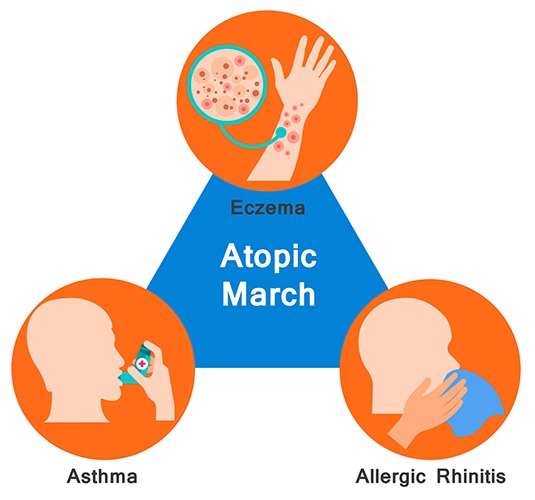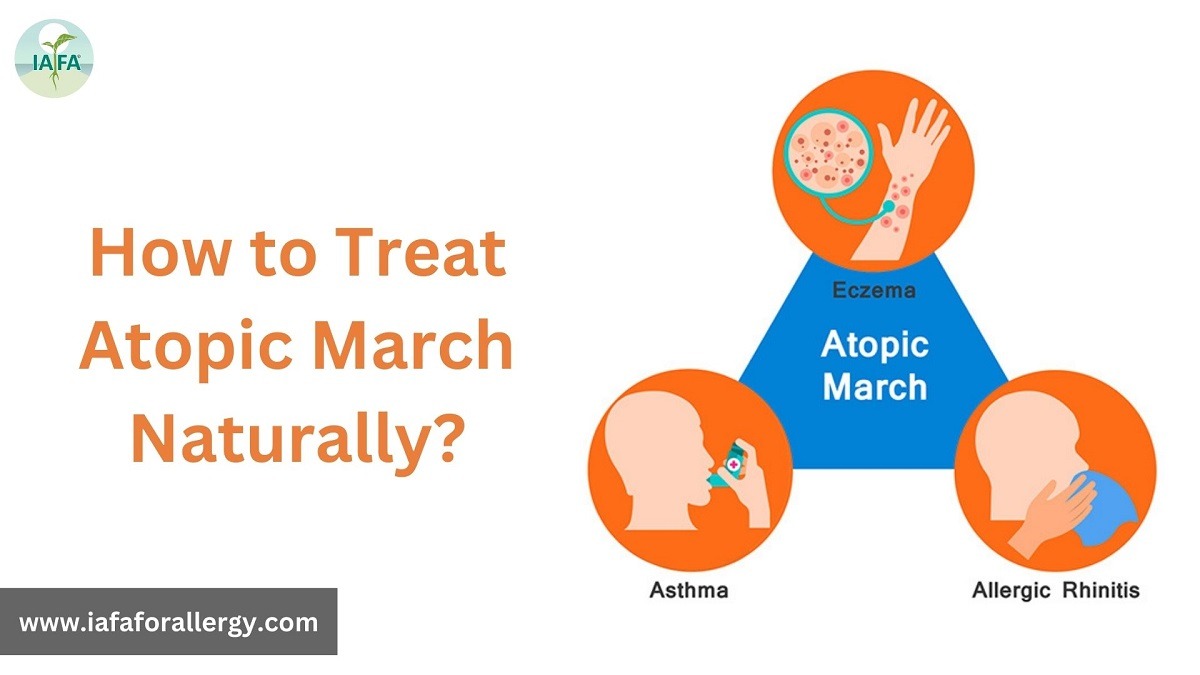Childhood allergy disorders such as allergic rhinitis, allergic asthma, and atopic dermatitis have become much more common.
Atopic March, also known as Allergic March, describes the usual course of allergic disorders, which frequently manifest in infancy. These include asthma, food allergies, allergic rhinitis (hay fever), and atopic dermatitis (eczema).
Atopy is characterized as a tendency to develop sensitivity to environmental stimuli that may run in one’s family or be inherited. Atopic diseases, such as allergic rhinitis, asthma, and atopic dermatitis (commonly known as eczema), have become more prevalent in affluent nations in recent years.
Allergic Triangle, Atopic March, Allergic March, Allergic Triad, and Atopic Triad are named for the relationship between atopic dermatitis, food allergies, allergic rhinitis, and asthma. The term “atopic march” was created to describe how atopic illnesses progressed from adolescent atopic dermatitis to childhood allergic rhinitis and asthma.
Concept of Atopic March
Eczema, Asthma, and allergies frequently co-occur, and this is known as the atopic trio. Eczema is often the first ailment, followed by asthma, and allergic rhinitis, which results in sneezing and a runny nose.

Eczema – The First State of the Atopic March
The atopic march frequently starts with Eczema. Eczema, commonly referred to as atopic dermatitis, is a steady skin disorder that results in dry skin and red, itchy bumps. These lumps have the potential to swell and fill with fluid. The lumps occasionally weep, which means they bleed fluid, after which they develop a crust.
These pimples typically develop in the folds of the skin. They frequently manifest themselves in children’s ankles, backs of knees, and places like elbows.
Allergic Rhinitis – The Second State of the Atopic March
An allergic reaction to allergens including pollen, pet, and dust mites can result in hay fever, also known as allergic rhinitis. A runny nose, sneezing, and watery eyes are hay fever symptoms.
The signs of hay fever can sometimes be confused with those of the common cold. You might not develop a fever, which is one method to distinguish hay fever from a cold. Hay fever can cause you to feel dreadful sometimes but an alteration in your diet and lifestyle changes will help you to cure its symptoms.
Asthma – The End State of the Atopic March
People with eczema have a higher risk of acquiring asthma than children without eczema, which indicates that eczema is a significant risk aspect for the development of asthma. This condition is the final step of the atopic march. Asthma is an endless disorder of the lungs. It makes breathing difficult by inflaming and constricting your airways. Speaking and moving might be difficult when asthma is severe.
The Root Cause of Atopic March
Food is the main cause of the atopic march. Inflammatory illness patients need to pay close attention to their diets. When a person has problems digesting particular meals, they develop food sensitivity or intolerance. For instance, this may result in gas, bloating, stomach pain, or diarrhea.
On the other hand, a food allergy brings on an immune system response that impacts several organs in the body and can result in a variety of symptoms, some of which are life-threatening. The following foods may cause skin flare-ups: Egg, Wheat, Rice, peanuts or tree nuts, milk, and other dairy products, including baby formula, Sesame seeds, or oil.
So eliminating foods that flare up your symptoms can help you to manage the illness.
Ayurvedic Treatment of Atopic March
One of the underlying causes of an allergic reaction, according to Ayurveda, is digestive dysfunction. The body becomes more susceptible to some external substances, such as dust and pollen, when digestion is poor.
Additionally, the Doshas become unbalanced when these foreign particles are present. Toxins build up as a result of Dosha imbalance, which leads to irritation and skin outbreaks from allergies. Such allergic reactions can be decreased by making certain favorable dietary and lifestyle adjustments. Lukewarm water should be consumed throughout the day, while fried meals and dairy products should be avoided at all costs. Additionally, eating dinner two hours before going to bed aids digestion and reduces the likelihood of allergic reactions.
For more information, Contact us to consult with our health expert Dr. Sahil Gupta (B.A.M.S., M.H.A.).




